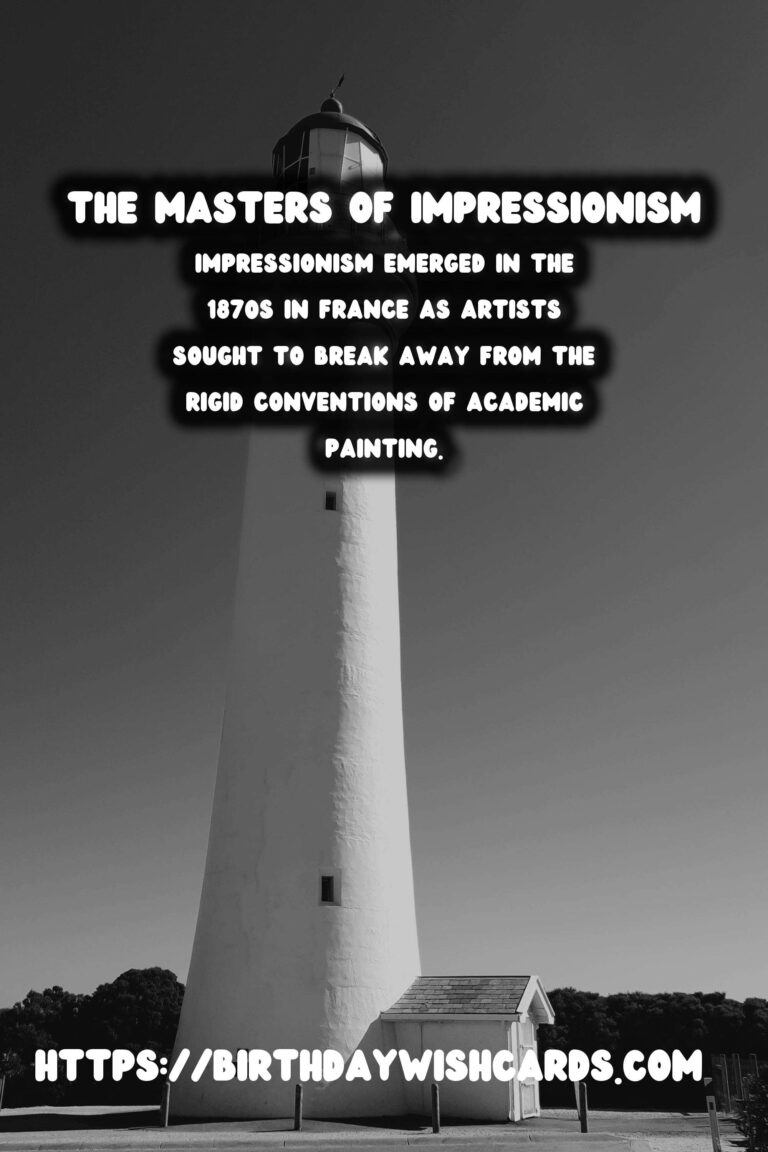
Introduction to Impressionism and Post-Impressionism
Art has always been a reflection of society’s evolving perspectives, and two of the most influential movements in the late 19th century were Impressionism and Post-Impressionism. These movements marked a significant departure from traditional art, focusing on capturing the essence of moments and the emotional experience of the observer.
The Birth of Impressionism
Impressionism emerged in the 1870s in France as artists sought to break away from the rigid conventions of academic painting. Artists like Claude Monet, Édouard Manet, and Pierre-Auguste Renoir focused on capturing the fleeting effects of light on surfaces and used short, visible brush strokes to create a sense of movement and life.
Key Characteristics of Impressionism:
- Visible Brushstrokes
- Emphasis on Light and Color
- Portrayal of Ordinary Subject Matter
- Open Composition
Main Contributors to Impressionism
The Impressionist movement was characterized by a diverse group of artists who sought to portray their experiences with spontaneity and authenticity. Claude Monet, often considered the father of Impressionism, painted Impression, Sunrise, the piece that gave the movement its name. He was fascinated by the natural world and dedicated to capturing its transient moments.
The Transition to Post-Impressionism
By the 1880s, a shift began as artists started to express more personal, symbolic content through their work, thus leading to Post-Impressionism. This movement went beyond Impressionism’s desire to capture light and color, seeking to delve deeper into the subjective emotions and ideas of the artist.
Distinctive Features of Post-Impressionism:
- Emphasis on Symbolic Content
- Vivid Colors
- Abstract Forms
- Expressive and Emotional Distortion
Leading Figures of Post-Impressionism
Notable artists such as Vincent van Gogh, Paul Gauguin, Georges Seurat, and Paul Cézanne were instrumental in defining Post-Impressionism. Vincent van Gogh’s vivid use of color and emotive brushwork in pieces like The Starry Night conveyed deep personal expression and emotion.
The Impact on Modern Art
The transition from Impressionism to Post-Impressionism was not just about the visual style, but also about transforming art’s narrative nature. It paved the way for future movements like Cubism and Expressionism, influencing artists and changing public perceptions of art forever.
Both movements challenged the status quo, supported the growth of modern art, and endorsed a new freedom in creating art that communicated the artist’s inner visions and emotions.
Art History Tours: Discovering the Masters
Today, embarking on art history tours allows enthusiasts to witness masterpieces from both movements. Museums such as the Musée d’Orsay in Paris and the Van Gogh Museum in Amsterdam offer glimpses into the fascinating evolution from capturing raw light in nature to expressing intense emotional landscapes.
These tours can enrich the understanding of the profound impact these movements have had on art, inviting reflection on their lasting legacy and relevance in today’s artistic expressions.
Conclusion
Whether you are an avid art lover or a curious traveler, visiting the world of Impressionism and Post-Impressionism can offer profound insights. Their innovations underscore an era of exploration—one that resonates through contemporary art today.
Impressionism emerged in the 1870s in France as artists sought to break away from the rigid conventions of academic painting. By the 1880s, a shift began as artists started to express more personal, symbolic content through their work, thus leading to Post-Impressionism. 
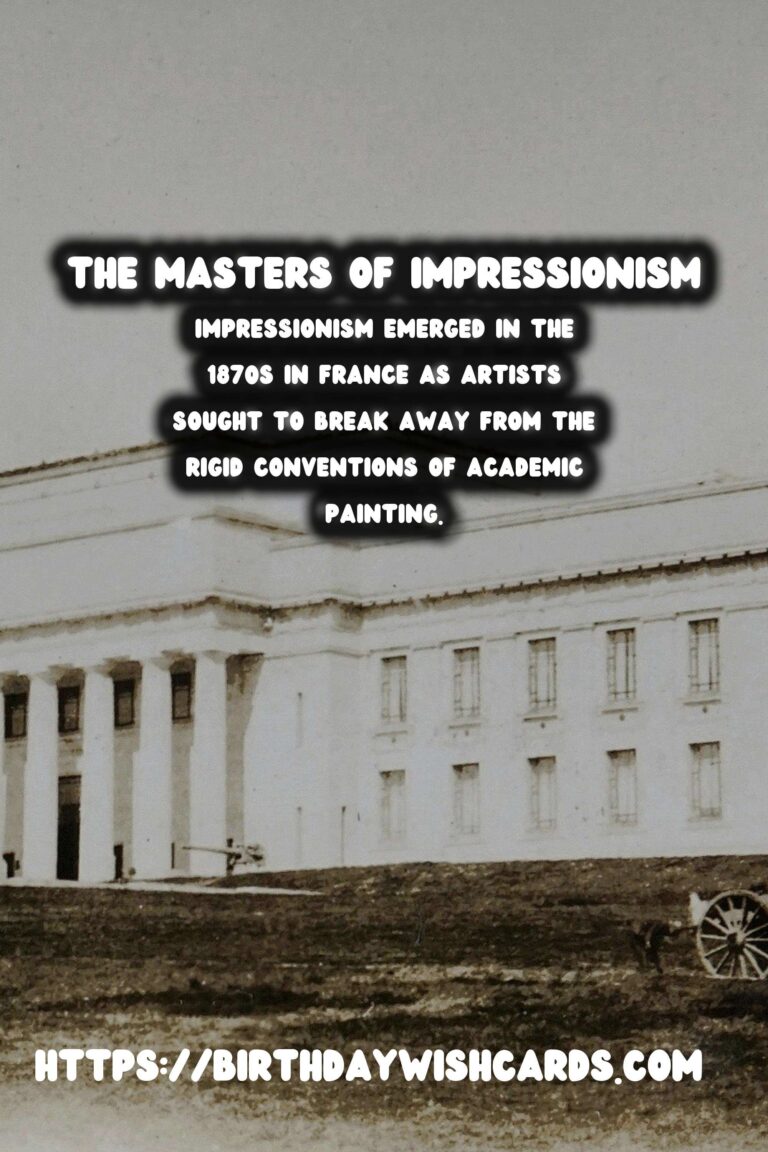
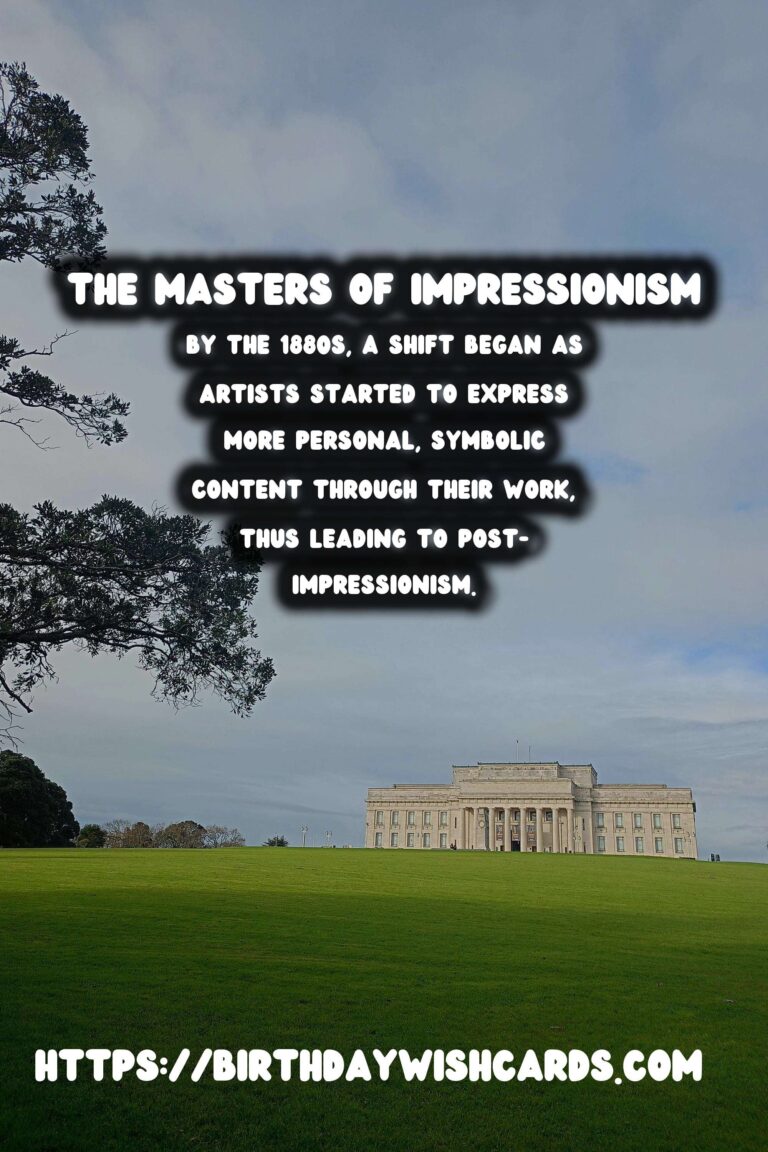
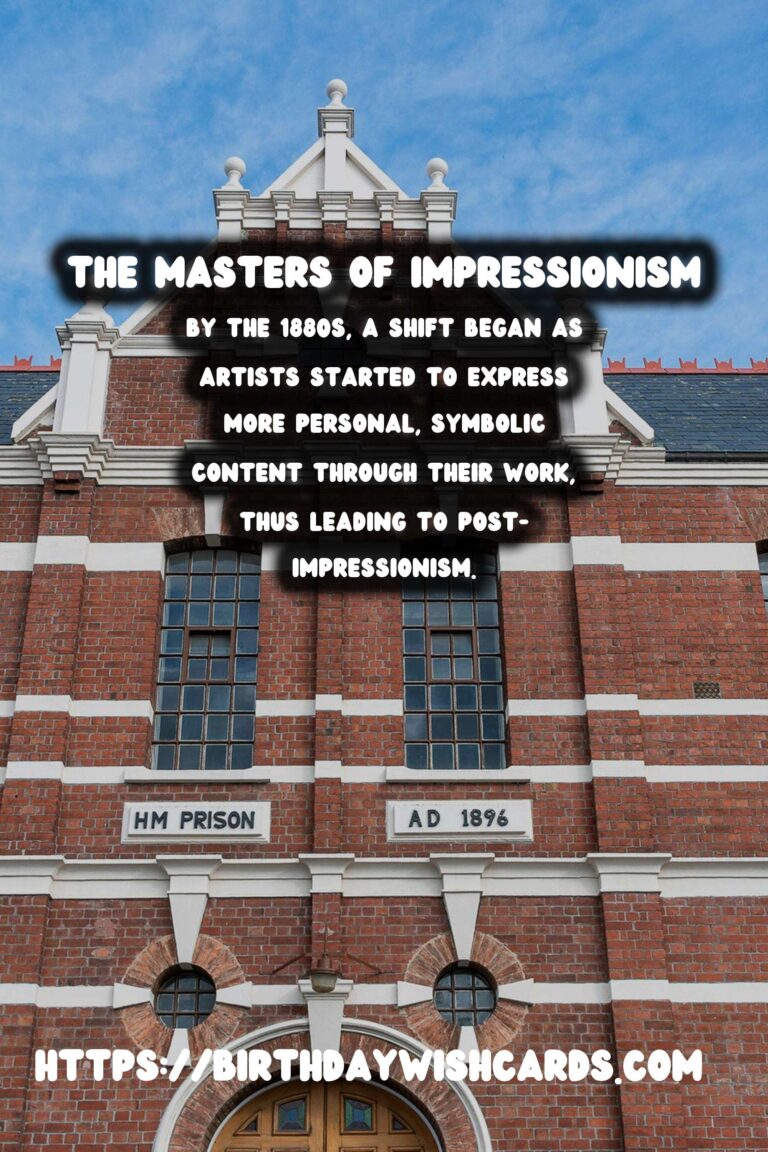
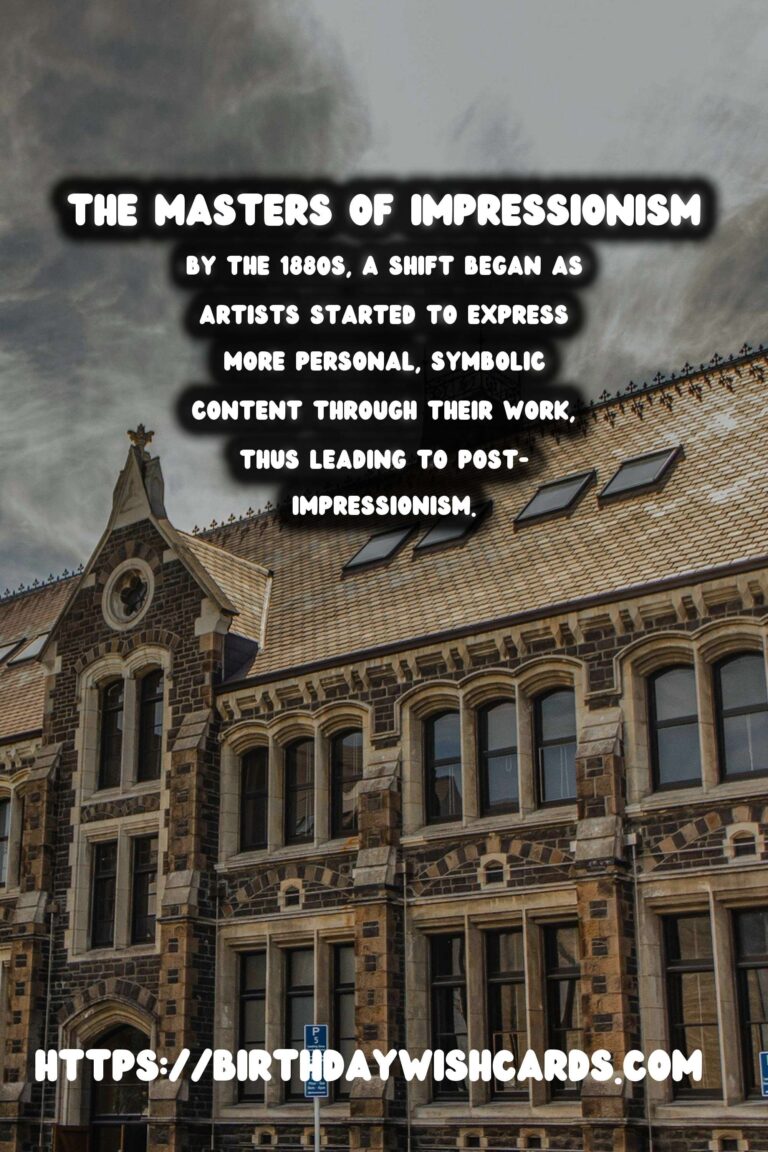
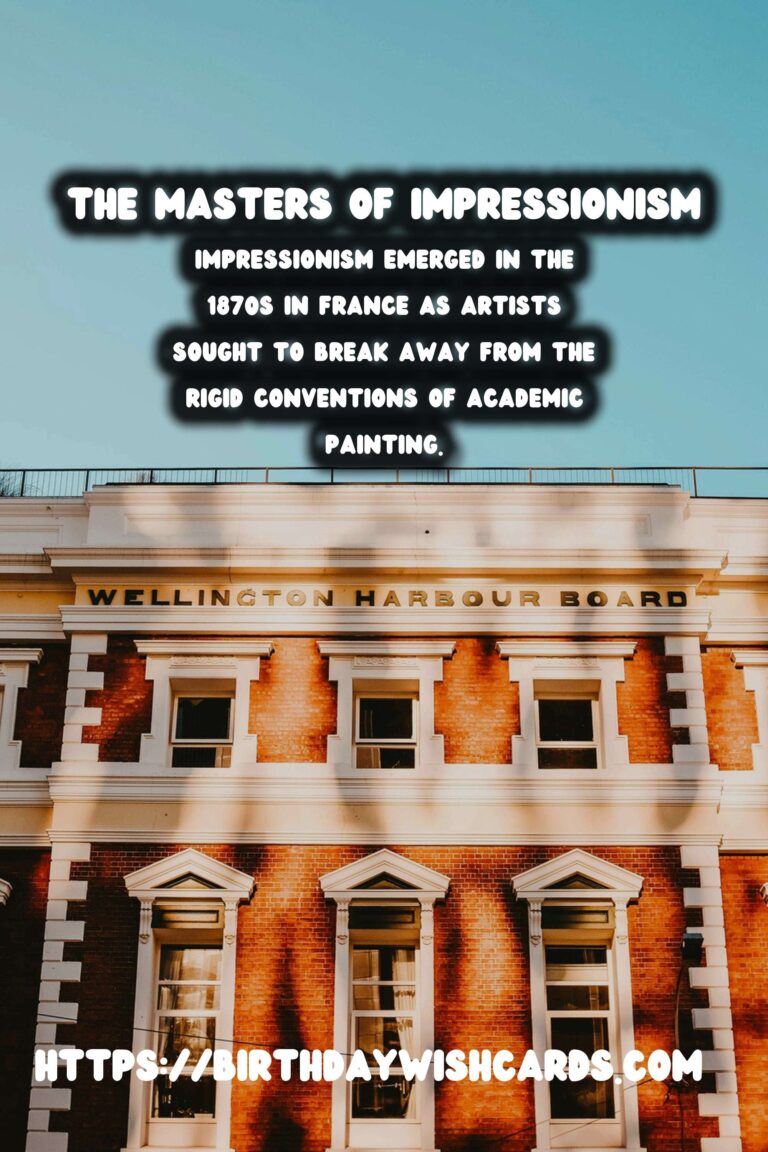
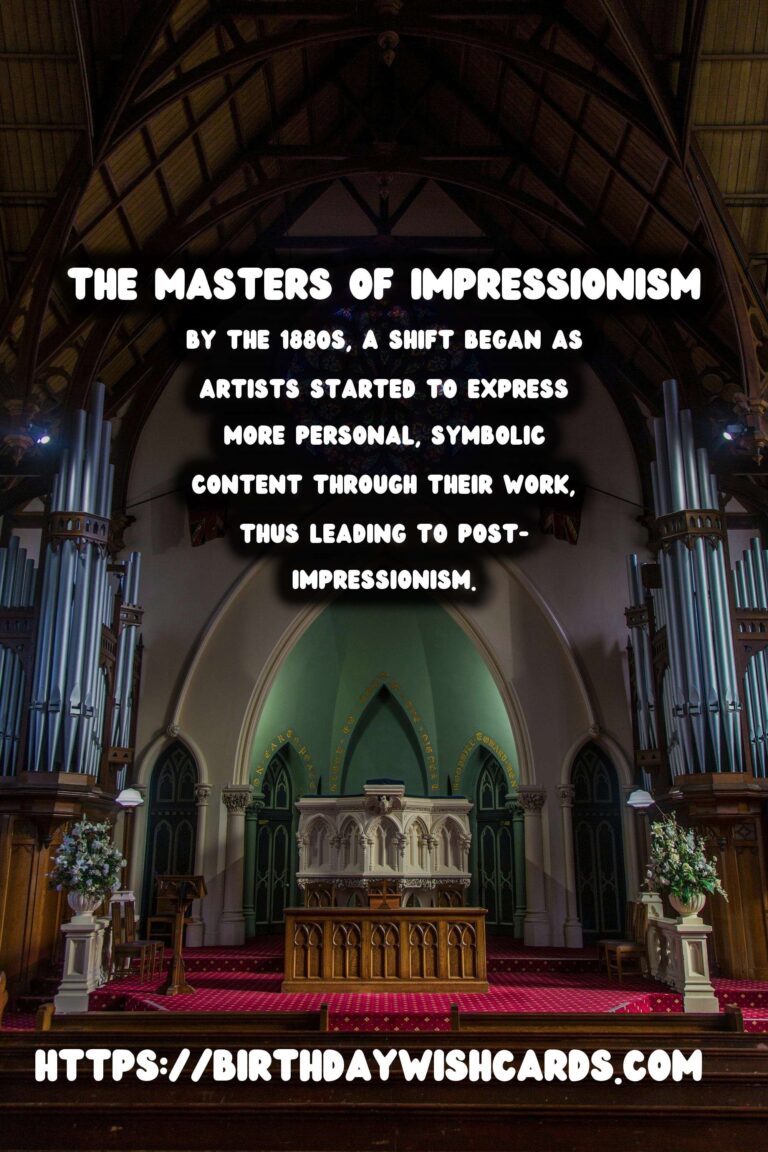
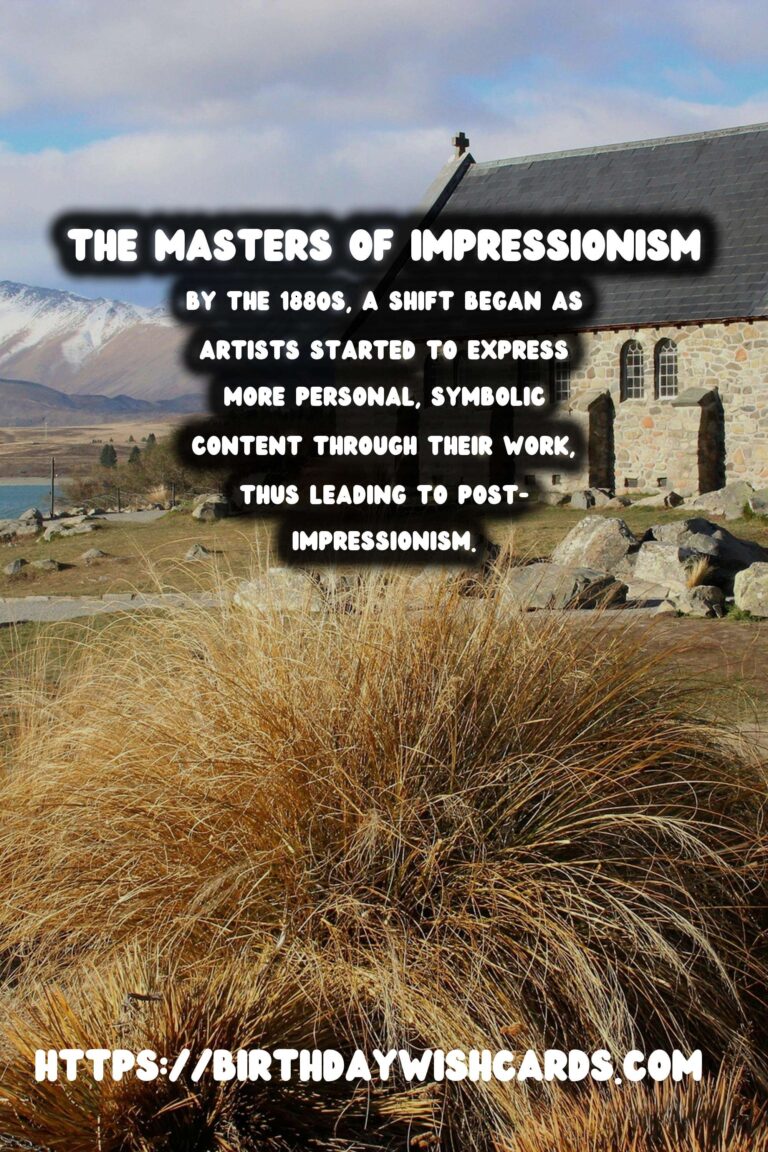
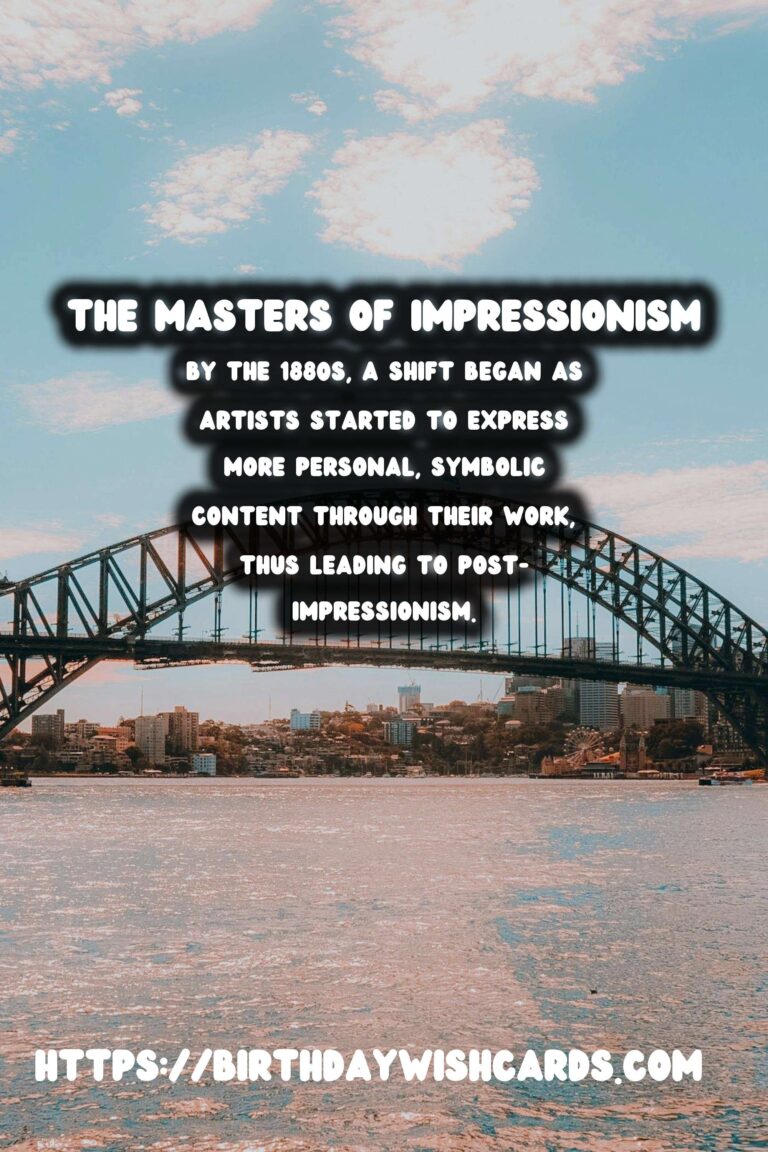
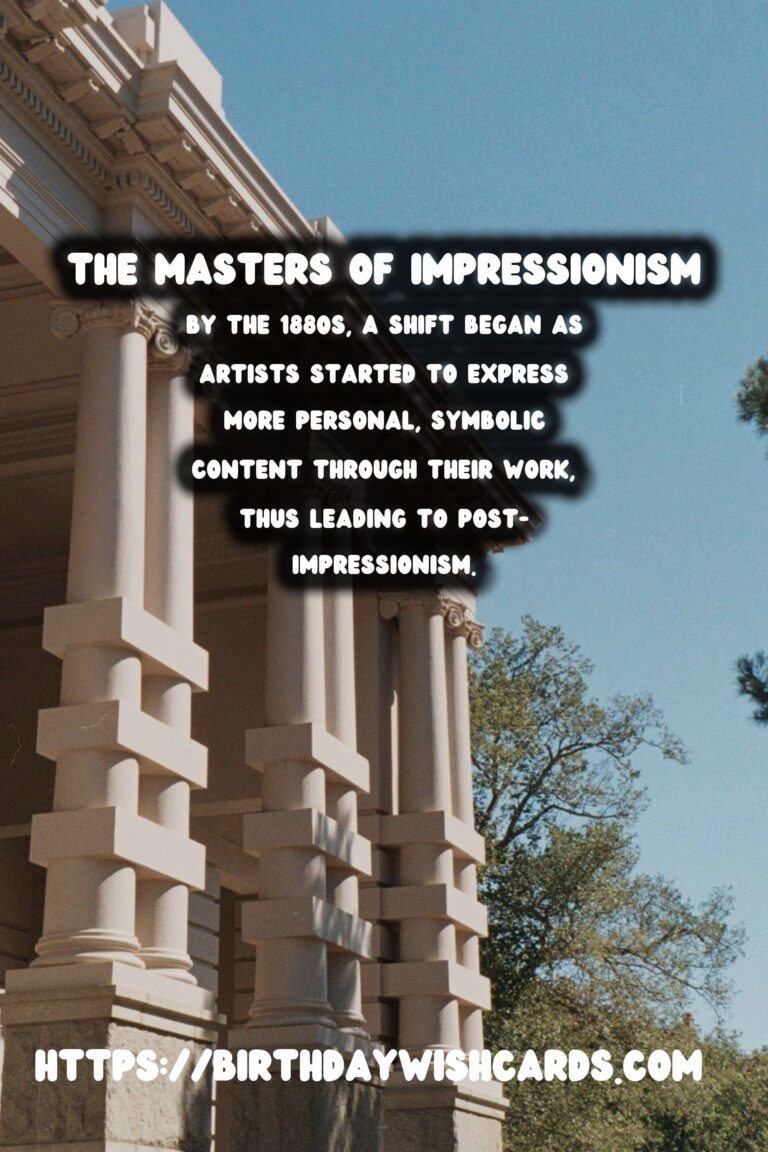
#Impressionism #PostImpressionism




